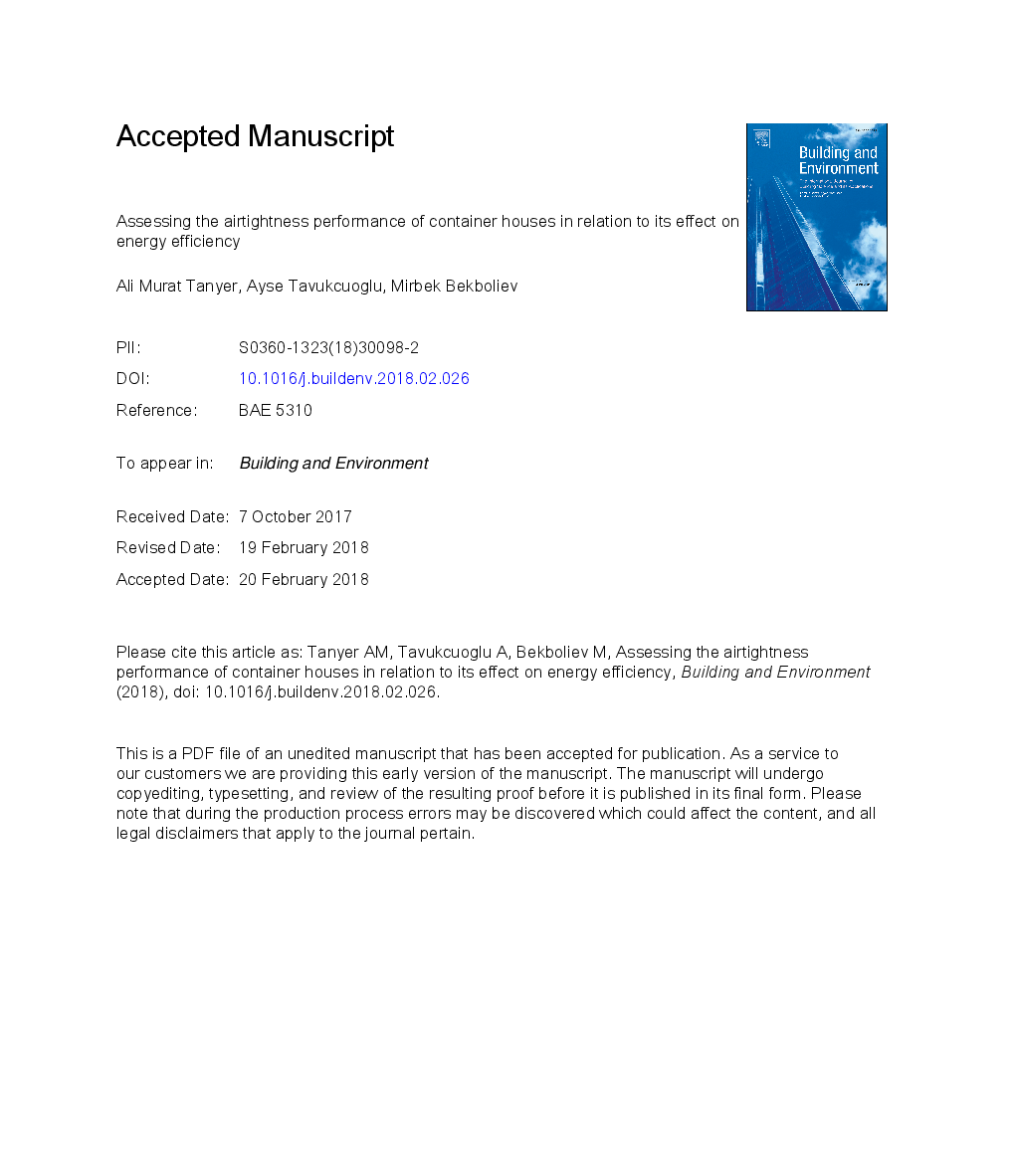ترجمه فارسی عنوان مقاله
ارزیابی عملکرد هوادهی خانه های کانتینری در رابطه با تأثیر آن بر بهره وری انرژی
عنوان انگلیسی
Assessing the airtightness performance of container houses in relation to its effect on energy efficiency
| کد مقاله | سال انتشار | تعداد صفحات مقاله انگلیسی |
|---|---|---|
| 151257 | 2018 | 38 صفحه PDF |
منبع

Publisher : Elsevier - Science Direct (الزویر - ساینس دایرکت)
Journal : Building and Environment, Volume 134, 15 April 2018, Pages 59-73

